Any house or apartment looks much more comfortable and more beautiful if various indoor plants are grown. It is the blooming vases or ordinary green plants in pots are able to give any room charm and freshness, make them unique in design. Therefore, many mistresses and flowers try to decorate not only the household plot, but also the windowsill of their house.
In recent years, the most popular indoor plant is an orchid - an incredibly beautiful, spectacular and diverse flower, which has long been famous for its special capriciousness and worst in care. These features of orchids are the main deterrent for many flower flows in making a decision to buy orchid for home cultivation. However, grow orchid at home for novice flower flowers under the power under compliance with all rules and features of landing and care.
In this article, consider the main varieties of orchid for homemade growing, we present important rules for planting and leaving the room plant, and we will also deal with problems that may arise in the process of growing orchid at home.
Features and description of home orchid
Orchid is a long-term grassy flower, which belongs to a large family orchid. To date, there are more than 25,000 different types of orchids in nature, which have the most incredible characteristics and features. The first mentions of this flower appeared approximately 80 million years ago. Since then, it is known simply about the huge amount of varieties that can cross each other and give hybrid offspring. Hybrid plants, in turn, retain the ability to give offspring.
The orchid family is the richest in the species diversity, especially after human intervention. Thanks to breeding work, many varieties were derived, which it became possible to grow at home. Most varieties of this culture are epiphyts, i.e. Plants that grow on other plants using them as a support. At the same time, these orchids are not parasites. Such a feature of orchids allows them to grown them at home without using ordinary soil. Today, a special mixture is sold, consisting of bark of trees and other dry items in which you can raise orchids. This allows plants to get more light.
- All orchids have fairly unique roots, which are actively involved in photosynthesis together with the leaves and absorb moisture. That is why it is so important to land orchids into transparent pots and vases so that the roots get a lot of light. The roots are thick, round or flattened.
- Orchids are distinguished by their dense and meaty foliage, which has an oblong, slightly egg-shaped shape with a longitudinal vest in the center of the sheet plate. The leaves are collected in a root rosette.
- Orchid flowers have the most diverse form and color, the main difference of which is a mirror symmetry. Sizes of inflorescences can vary from 2-3 cm to 13 cm.
- Flowers can grow differently depending on the type of plant. Some inflorescences are focused on the leaf sinuses, and some are blooming on long blossoms, such as Falenopsis orchid, the most popular variety of orchids, which can be grown at home.
Orchid is one of the most beautiful and ancient plants that got its name still in ancient Greece. Pupil Plato The philosopher theophrast as a result of his scientific experiences came across an unfamiliar amazing flower, from whom the roots had a view of a paired bulb. The scientist gave this plant name Orchis, which translated from Greek means "egg". Thanks to this philosopher, the modern world learned about the existence of such a beautiful flower, which can be grown independently at home, with a proper form and a variety of culture.
Orchid varieties for growing at home
Despite the fact that in nature and culture there are a huge number of types and varieties of orchids, at home it is possible to grow only a few varieties that can adapt to the temperature and humidity of the premises. Consider the main types of orchids that can be raised at home.
- Orchids phalaenopsis. The natural aril of the habitat of this species is the tropical forests of Asia and Australia. Orchid is very easy to care, in comparison with the rest. Today, in flower shops, you can most often meet the orchids of Falenopsis. The flower grows perfectly and blooms at high temperatures. Different varieties of this species bloom at different times, so flowerflowers can create real collections of orchids, blooming throughout the year. Requires scattered light and year-round irrigation. Does not need rest.
- Hybrid orchids Miltoniopsis. This kind of orchid is somehow reminded by their colors with all the famous pansies. The natural habitat is considered the territory of Peru, Ecuador, Costa Rica. Specifically, hybrid varieties are not distinguished by the worst of care in contrast to species. Plant for growth requires a constant temperature of 20-22 degrees. It needs constant humidity and irrigation. Blossom usually falls on spring or autumn.
- Orchid pafiopedulum. This type of indoor flower is another name - Venerine shoe, which is associated with the appearance of colors. Only certain varieties adapted to the warm room in winter can be grown at home.
- Wanda orchid. This is a very interesting and unusual kind of orchid, which has two types of foliage: flat or cylindrical shape. Long blooms grow from sheet sinuses, on the tops of which large flowers of the blue shade bloom. Blossom comes at the end of autumn or at the beginning of winter.
- Orchid Erides. In the natural environment is a rather large plant. At home, bloom begins in the spring and continues until summer. Requires high humidity and bright light without direct sunlight. Throughout the year he needs irrigation and feeding. The rest period is not required.
- Branchavola orchid. The natural area of \u200b\u200bhabitat is the territory of the Tropics of America. At home is quite simple in the caring flower. Flowering falls for summer or autumn. The plant prefers a bright light and moderate constant temperature. Such orchid in the period of growth is watered regularly, and after flowering it is necessary to provide a period of rest within 2-3 weeks.
- Hybrid cattle varieties. It is one of the most favorite flowerfish of orchid varieties, which prefers warm air, moderate humidity, bright lighting and good ventilation. In winter, the plant will need peace for 6 weeks when watering is significantly reduced.
How to grow orchid at home
For beginner flower water, it is recommended to start the cultivation of orchids from the simplest species - phalaenopsis, which is fairly simple and not burdens in the home conditions. Any cultivation of the plant begins with the acquisition and choice of flower in the store, as well as with the right choice of soil and pot. All these factors are the main key to getting a beautiful and blooming orchid flower.
How to choose a room orchid in the store
First of all, it is important to choose the right orchid in a flower shop. It should be borne in mind that very few varieties of this beautiful flower can be grown at home. Of the above orchids, half requires warm temperatures for its growth, for example, phalaenopsis. However, there are species for which the cultivation of which is needed a sharp environment, such as pafiopedylenes.
Beginners and inexperienced in the cultivation of orchids, flowers are recommended to start with phalaenopsis, which is pretty simple in care. Do not buy too exotic and complex varieties that can simply not survive at home.
Buy orchid is recommended in good and proven gardening and flower shops that sell only high-quality grades of this plant. Pay attention to the appearance of the flower, it should not be damage and dry roots, the substrate in the pot must be clean and without signs of mold.
Pot for orchid at home
The correct capacity for the cultivation of orchids at home is one of the most important rules for landing and culture care. In flower shops, all orchids are sold in standard transparent plastic pots. By the standards of floristics, this is considered the most optimal option for the cultivation of orchids.
Often, many flower trees choose clay pots, thinking that they are more eco. However, as a result, the flowers begin to hurt, and their roots rot. This is due to the fact that in such pots it is bad for excess water, and there are few space roots, as a result of which they stick to the surface of the tank and begin to rot. In addition, the roots do not receive light through such pots.
With the plastic pots, everything is completely different. Roots can breathe and ventilate due to a great drainage. In addition, they get sunlight in excess. Many orchid lovers planted their exotic beauties in special baskets, suspended porridge.
Preparation of soil for orchids at home
For all orchids, the usual nutritional soil does not fit, whatever qualitative composition you would do. These flowers in nature most often grow on other plants go big trees, so in the ground they will simply grow. Today, special substrates for orchids are sold, which mainly consist of a mixture of sfagnum moss, pine bark, upper peat and a small amount of charcoal. Many manufacturers add additional components to such a mixture, such as fertilizers.
If you do not have such a mixture at hand, you can make it yourself. To do this, it is necessary to take a pine bark and chop it finely, after which the pieces of cortex needed to boil. To this mixture, add some clean peat and a completely slightly charcoal. All are well mixed and you can use to land orchids.
Optimal conditions for the cultivation of orchids at home
All orchids are very capricious plants that require the creation of optimal conditions for their cultivation. If you do nothing and do not delve into all the details of home care for orchids in the pot, then you risk losing an exotic beauty. Consider the basic rules and conditions that need to be created in the orchid room.
- Lighting. The main factor in the successful cultivation of orchids at home is the creation of optimal lighting. It will depend on it whether it will bloom. In addition, it is important to remember that if the lighting is not enough, then the plant does not have enough nutrition for the growing season. And on the contrary, if the lighting is in excess, orchid may simply burn. All orchids love a large amount of light, but not straight rays of the sun, but scattered light. It is important to provide this flower as long as possible, so sometimes you will have to highlight orchids with lamps. Ideally, if you get placed pots with orchids on the eastern window, if there is no such possibility, then the South or Western side will suit. Be sure to pay attention to the color of the leaves: if they darken greatly, the plant needs more light; If you become pale, then it is better to pronounce orchid.
- Temperature. Temperature range is also an important condition for the successful cultivation of orchids. Almost all varieties of this family require difference in day and night temperatures, which is quite simply organized in apartments. The optimal daytime temperature for phalaenopsis, Vandy, Cattley, and some of the representatives of the dendrobium should be approximately 18-26 degrees, and the night - 13-24 degrees. When the centralized heating is turned on, at night, you can transfer orchids to cooler rooms, which will ensure the rapid appearance of the color saw.
- Humidity. Most orchids prefer premises with air humidity within 60-80%. Most often, such humidity is observed in the kitchen. If you do not have such a room, then you can put pots with flowers on special pallets that are filled with water. Optimal humidity can be achieved by spraying orchids from the pulverizer in the morning time.
How to plant orchid at home
In nature, almost all orchids are preferred to grow on other plants or trees, so it is necessary to approach the orchid landing process at home. At the same time, it is important to always adhere to certain rules, relative to a specific type of flower. There are several planting technologies that have their own characteristics.
Landing orchids on the unit at home
- First of all, imitating natural conditions, orchid can be placed on the block.
- As a block may come absolutely anything. For example, fern, snag or a piece of tree bark.
- You need to choose the block based on the size of the flower.
- Next, you need to take a suitable vase or pot and refer it to the bottom of the MCH layer.
- The selected snag or bark is placed on it, to which the root of orchid is fixed with the thread.
- With this method of landing it is important to remember that the plant will quickly disperse, so it is important to ensure an increased level of humidity.
Planting orchids in a pot into a substrate at home
- To date, a special substrate for the landing of orchids is sold in flower shops, but if desired, such a soil can be made independently.
- The most common mixture of the substrate is the following: high-quality moss and pine bark. First of all, the harvested bark must be thoroughly scolded with boiling water, after which it is crushed. Next is mixed with moss and placed in a pot, where the orchid is then planted.
- Alternatively, the substrate can be prepared from the ground, fern and moss mixed in the same proportions.
- Many flower products are often used chopped pine bark and peat.
- Next is the appropriate capacity, it is desirable a transparent pot with good drainage holes and a stradder for flowers. At the bottom of the pot, you need to pour a layer of drainage, which can also be bought in the store.
- Further, the orchid is placed in the container and the space around it falls asleep by the prepared substrate.
Landing orchids at home in basket
- Landing orchids in the basket is considered the most optimal and natural option, since the root system can breathe.
- First of all, pick up the appropriate basket version and find the optimal block over the magnitude and secure it for the bottom.
- Next, pour a quality wet substrate to the basket, and place the peat on the sides.
- In such conditions, orchid will grow well.
Orchid: Home Care
Further care for orchids at home will depend on the specific type of plant. However, despite this, it is necessary to adhere to the basic rules of agrotechnika cultivation in order to eventually get a beautiful orchid with bright and lush flowering. Consider the main stages of care for this flower.
Orchid at home after purchase
After buying orchids in the store, it is important to adapt the flower to a new conditions for it to reduce the stress for orchid and minimize the negative impact. To this end, the orchid is placed in quarantine. This means that for a few weeks you need to put a new branch separately from other colors in a slightly privided place. At this time, it is not necessary to feed orchid and water it, in order to identify possible pests or illnesses at an early stage. After the completion of quarantine, it is possible to beat the plant to the light to the light and begin to water it.
It is not worth transplanting just a purchased orchid, it can perfectly grow in this pot for several years. The exception is an orchid planted in a sfagnum moss.
Watering orchids at home
An important point of orchid care is properly organized watering. Water this plant is recommended only with soft water without adding chlorine and impurities. It is suitable for the usual outstanding water or boiled, and it is best to use talu water or rain. Watering mode For each type of orchids, its own, however, the general for them is one rule - it is necessary to water only when the substrate gets up, otherwise the roots can start rotting.
Water orchids are recommended only in the morning warm water. In the summer, the frequency of waterings is every two days, and in winter - 2 times a week. Beneficiously affects the flowers of a hot shower, which can be spent once a month, especially during flowering. Lost such a soul must not more than 2 minutes. It is possible to water orchid in several ways: a thin watering, diving pot into the tank with water.
Than to feed orchid at home
For full growth and flowering orchids, it is important not to forget about the application of fertilizers. The feeding of these colors should be balanced and only with the use of special fertilizers for orchids that can be bought at any gardener store. The optimal form of fertilizer is once every two weeks or with each 2-3 irrigation. During the period of active extension of the green mass, you can increase the amount of nitrogen. When using special fertilizer, it is necessary to breed it according to the instructions.
At the time of the rest of the orchid and in winter, feeding shrinks.
How to cut orchid at home
The care for orchid after flowering at home is the proper trimming of flowers. Radiated orchid buds are removed immediately, the flowers are cut off at the base itself, with the exception of phalaenopsis. This type of orchid blooms are cut down slightly below the lower flower. It is also necessary to cut the dried pieces of leaves. Fully removed faded leaves and yellowed.
Orchid bloom at home
In the garden and flower stores, orchids are most often selling with blooming, so each flower water wants to keep this blooming beauty. To understand the nuances of departure during this period, it is important to know how much orchid flowers at home. On average, these plants bloom twice a year, with the exception of phalaenopsis, which can produce inflorescences throughout the year. At this time it is important to increase the amount of irrigation and always maintain a comfortable temperature.
So that in the future orchid regularly bloom, it is important to carefully care for this plant. To do this, it is necessary to ensure the desired length of the daylight, and also regularly feed and water the culture. In such conditions, you can continue not to break your head over the question, why orchid does not bloom at home.
How to transplant orchid at home
Sooner or later, every flower engine, which is engaged in the cultivation of orchids, have to face the transplant process. These plants are not very fond of transplant, so it is necessary to carry out this procedure very carefully and in extreme need. The following situations can be the reasons for the transplant: there is not enough space in the pot of roots and rhizomes, the substrate turned into a small crumb, orchid begins to suffer from the convergence.
Orchid transplant is important to spend after the end of flowering and it is better to choose the spring period for this. In advance, it is necessary to prepare a suitable pot of larger and buy a substrate in the garden store.
- The pot needs to be thoroughly wash, after which it is necessary to put a layer of drainage.
- Carefully remove orchid from the old pot. If you need to completely replace the soil, then it is preferably all the roots of orchid rinse with running water. At this stage, dry roots can be trimmed.
- The drainage layer is poured on the substrate layer, which is placed flower. After that, he falls asleep, in this case, it is not very compacted by the surface.
- If necessary, you can put a support.
- After a transplantation within a few weeks, the plant is placed in quarantine, during which it is moderately watered and sprayed.
How to reanimate orchid at home
Sometimes the plant can be badly damaged, after which it needs the most emergency. There are two ways of resuscitation: in the greenhouse and outdoors. If all the roots of orchids rotted, then it is better to reanimate in the greenhouse. This process can take from one month to one year, it all depends on the scale of the problem. To prevent problems with this beautiful flower, it is important to comply with the conditions of cultivation and solve all problems in time.
Orchid reproduction at home
Any orchid can be quite easy to propagate at home, for this it is only necessary to know the most common ways of such breeding. Certain methods will depend on the specific type and variety of plants will analyze the most common ways.
- The reproduction of orchid by the division of the root. To sear orchid at home, you can use division. In this way, almost all orchids can be multiplied. To do this, get an adult plant from a pot, slightly smooth the roots. Next, using a sharp knife, you can cut the rhizome to several parts in such a way that each decene has at least three healthy false bulbs. Sprinkle with wood coal roots and transfer to a new place.
- Orchid from seeds at home. It is possible to grow this plant with seeds, but this is possible only in laboratory conditions with special equipment. Everything is due to the fact that for the seeds of orchids can germinate only in the environment of a certain fungus, the presence of which at home is rather difficult.
- Reproduction of orchid shoots. Many types of orchids form children who can further be used for breeding. These are individual processes of the parent plant, which over time can be separated and planted into separate containers.
Orchid at home - Photo
Orchid is one of the most beautiful and magnificent flowers that enjoys great popularity among gardeners. The cultivation of this plant at home is not so difficult if you regularly pay attention to him.

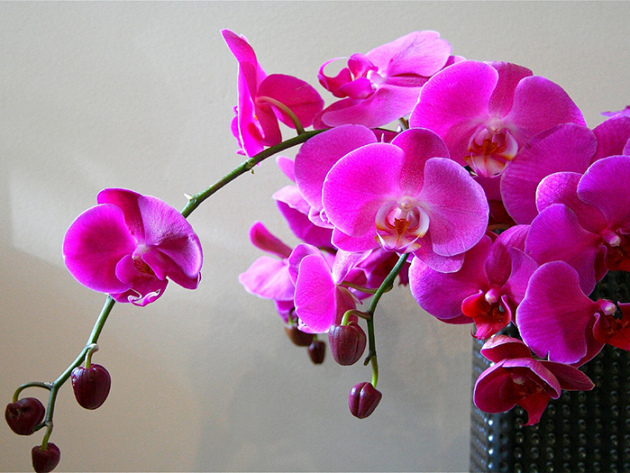
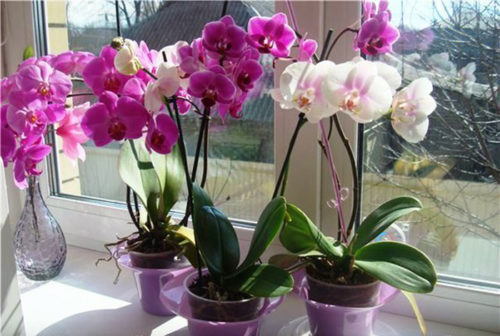
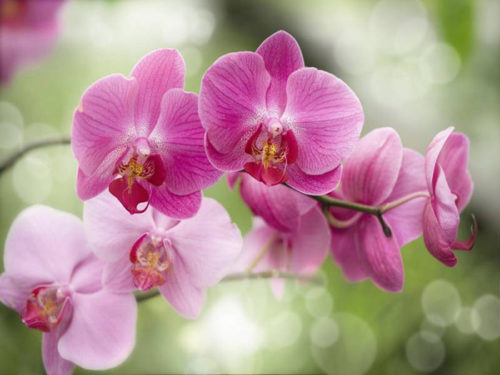
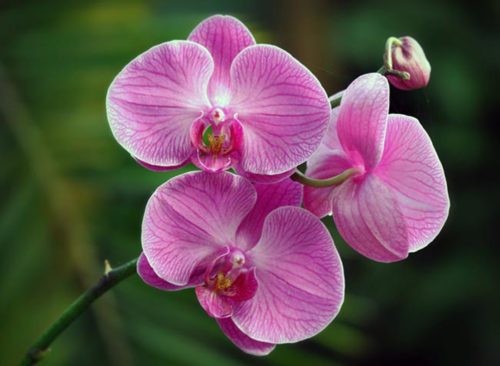
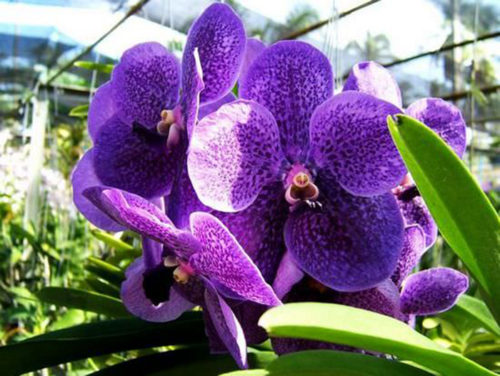
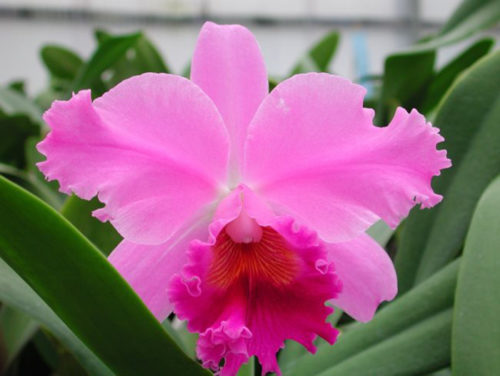
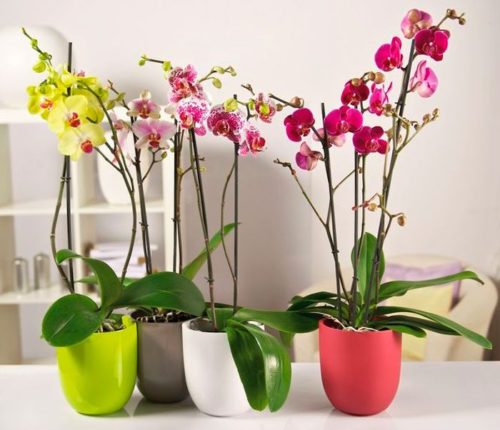

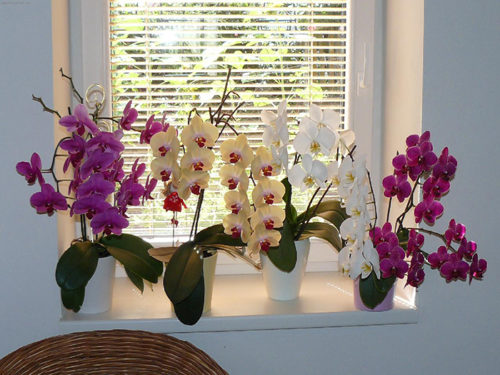
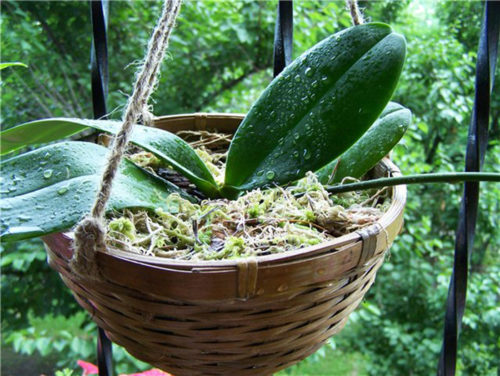
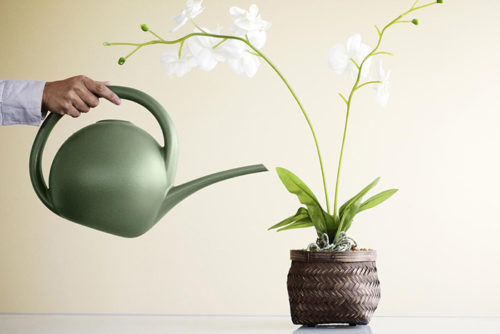
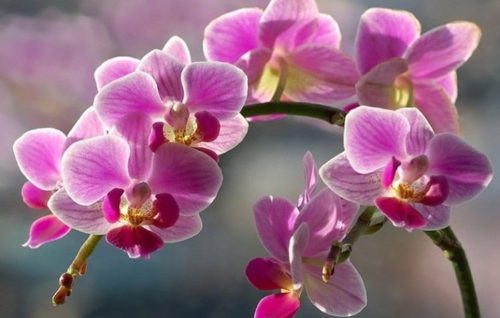
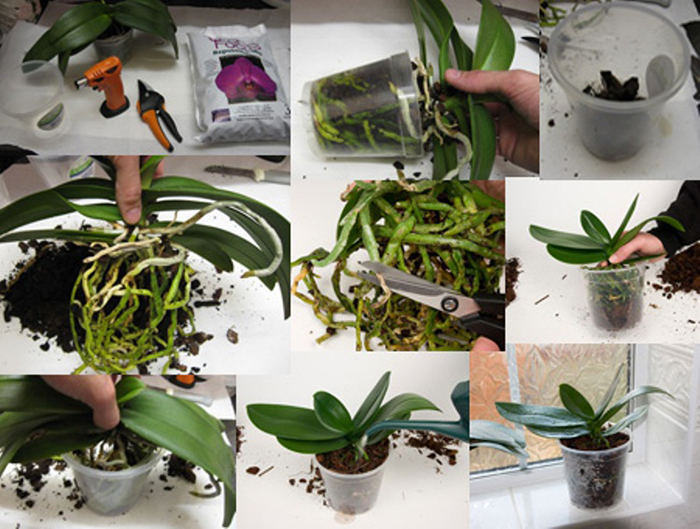
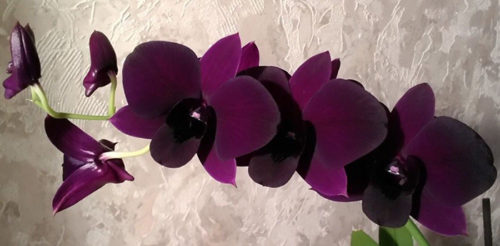
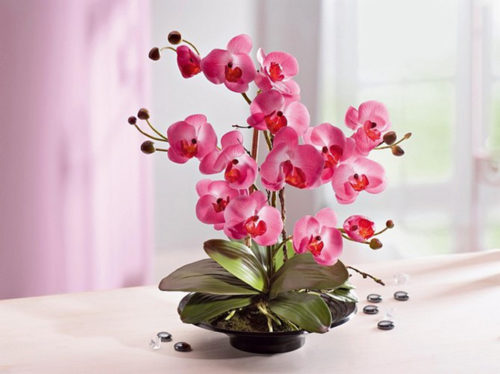
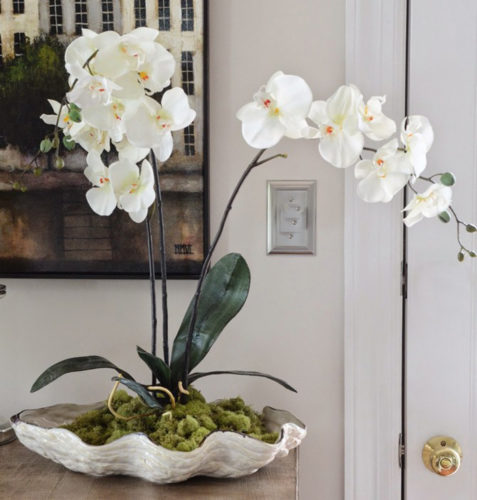
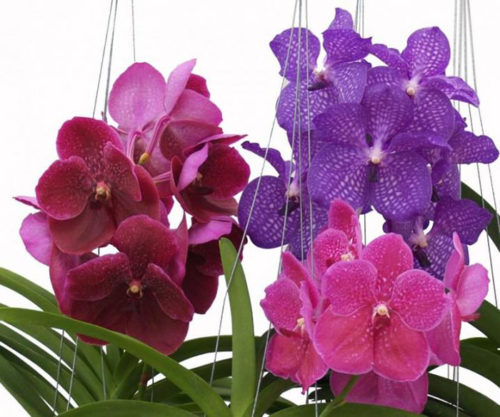
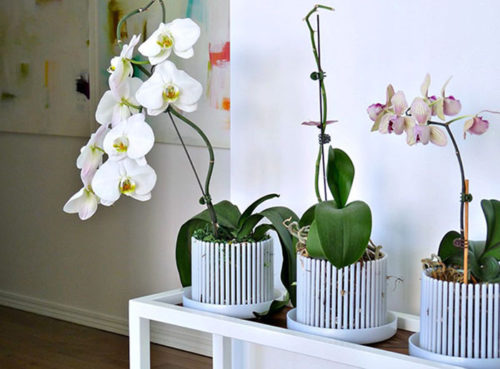












 Start a discussion ...
Start a discussion ...